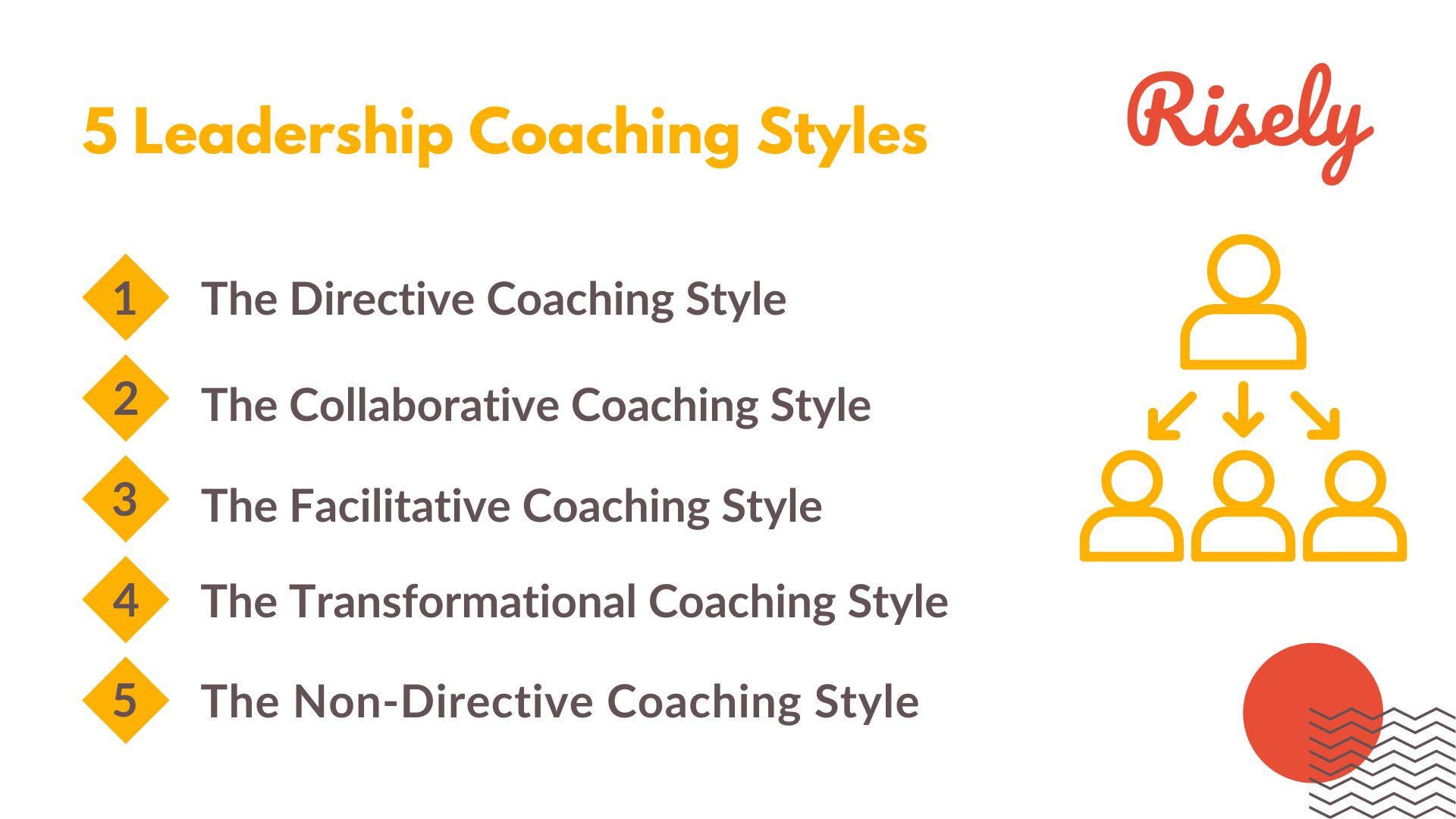5 Impactful Leadership Coaching Styles For Your Team
Have you ever wondered what sets great leaders apart from the rest? It’s about more than just authority or expertise but their ability to effectively coach and develop their teams. Imagine you’re working on a project, feeling lost in the woods, when your manager steps in not to dictate but to guide you, nudging you towards clarity and success. That’s the magic of leadership coaching in action. Think about it – leadership isn’t just about being at the helm but empowering others to navigate stormy seas confidently. And that’s where coaching comes in. As a Learning and Development (L&D) manager, you’re not just a bearer of knowledge but a cultivator of talent and a beacon of support. Today, we will discuss the fascinating world of leadership coaching styles.Table of Contents
5 Leadership Coaching Styles
The Directive Coaching Style
You’ve got a team buzzing with energy, but they need a clear path forward. That’s where the Directive style shines. It’s like being a compass in a storm, providing clarity and direction when required. So, what exactly is the Directive Coaching Style? It’s all about giving precise instructions and guidance and steering your team toward success. Think of it as laying down stepping stones for your team to follow. For instance, imagine you’re launching a new project, and your team needs a roadmap. You step in, outline the goals, and chart the course. That’s directive coaching in action, providing a clear framework for progress.Characteristics of Directive Coaching Style
The Directive Coaching Style carries several distinct characteristics that set it apart:- Clarity: Above all, this style emphasizes clear and explicit guidance. It’s about leaving no room for ambiguity. When you employ the Directive approach, you provide precise instructions and expectations, leaving little doubt about what needs to be done.
- Structured Approach: The Directive style often follows a structured approach to problem-solving and decision-making. There’s a systematic nature to how tasks are assigned, deadlines are set, and progress is monitored. It’s like having a roadmap that everyone can follow.
- Results Orientation: At its core, the Directive Coaching Style is focused on results. It’s about achieving goals efficiently and effectively. Leaders using this style keep their eyes on the prize, driving their team toward success with unwavering determination.
Examples of Directive Coaching Style
- Providing Clear Instructions and Guidance: Imagine you’re leading a team tasked with launching a new product. As the L&D manager, you employ the Directive Coaching Style to ensure everyone understands their roles and responsibilities. You provide clear instructions on the project timeline, deliverables, and quality standards. By laying out a structured plan and detailing expectations, you empower your team to work efficiently and effectively toward achieving the project goals.
- Urgent Situations or Crisis Management: A sudden disruption in the supply chain that threatens to derail your production schedule. In such urgent situations, as the L&D leader, you step in decisively, providing clear directives to address the crisis. You mobilize the team, assign specific tasks, coordinate efforts to minimize the impact and find solutions swiftly.
The Collaborative Coaching Style
The Collaborative Coaching Style is characterized by inclusivity, mutual respect, and active participation among team members. In this approach, the coach is a facilitator rather than a sole decision-maker, fostering an environment where ideas are shared and consensus is reached through collaboration.Characteristics of Collaborative Coaching Style
- Open Communication: Team members are encouraged to express their thoughts, opinions, and concerns freely. The coach facilitates open dialogue, creating a safe space for honest communication and feedback.
- Shared Decision-Making: Decisions are made collectively, with input from all team members. The coach values diverse perspectives and seeks consensus to ensure everyone feels heard and appreciated.
- Trust and Respect: Trust forms the foundation of the collaborative relationship between the coach and team members. A mutual respect for each other’s expertise, contributions, and perspectives fosters a positive and supportive work environment.
Examples of Collaborative Coaching Style
- Fostering Teamwork and Collaboration: Consider a virtual team spread across different locations. You create opportunities for asynchronous collaboration through collaborative tools and platforms, allowing team members to contribute ideas, provide feedback, and collaborate on projects regardless of geographical constraints. You cultivate a culture of inclusivity and teamwork by leveraging technology to foster collaboration.
- Encouraging Employee Involvement in Decision-Making Processes: Imagine your organization is undergoing a strategic planning process. As the L&D leader, you leverage the Collaborative Coaching Style to promote employee involvement in decision-making processes. You conduct focus groups, surveys, and brainstorming sessions to gather input from employees at all levels of the organization. Involving employees in the decision-making process fosters a sense of ownership and commitment to the organization’s goals, leading to more significant alignment and buy-in.

The Facilitative Coaching Style
The Facilitative Coaching revolves around guiding individuals or teams through self-discovery, problem-solving, and personal growth. Rather than providing direct solutions, the facilitative coach empowers others to explore their capabilities, develop critical thinking skills, and take ownership of their actions.Characteristics of Facilitative Coaching Style
- Active Listening: The facilitative coach listens attentively to understand individuals’ or teams’ perspectives, concerns, and aspirations. Through active listening, the coach builds rapport, fosters trust, and creates a supportive environment for exploration and learning.
- Questioning and Reflection: Instead of offering immediate answers, the facilitative coach poses thought-provoking questions to stimulate reflection and critical thinking. By encouraging individuals to explore different perspectives and possibilities, the coach facilitates deeper insights and enhances problem-solving skills.
- Empowerment and Autonomy: The facilitative coach empowers individuals to make decisions, take calculated risks, and learn from their experiences. By providing autonomy and support, the coach fosters a sense of ownership and accountability, motivating individuals to pursue their goals with confidence and determination.
Examples of Facilitative Coaching Style
- Supporting Employees in Problem-Solving: When a team encounters a complex technical issue that requires innovative solutions. As the L&D manager, you guide the team through a structured problem-solving process, employing the Facilitative Coaching. You encourage brainstorming sessions, facilitate discussions, and ask probing questions to help team members identify root causes, explore alternative approaches, and develop creative solutions collaboratively. By fostering a supportive and empowering environment, you enable the team to address challenges effectively and enhance their problem-solving capabilities in the long run.
- Empowering Employees to Take Ownership of Their Development: As an L&D leader, you engage employees in reflective conversations about their achievements, challenges, and career aspirations during performance review discussions. By encouraging self-assessment, soliciting feedback from peers and stakeholders, and offering developmental opportunities tailored to individual needs, you foster a learning, accountability, and empowerment culture where employees feel motivated to pursue excellence and contribute to organizational success.
The Transformational Coaching Style
The Transformational Coaching Style revolves around inspiring and empowering individuals to reach their full potential by fostering a shared vision, encouraging innovation, and promoting personal and professional growth.Characteristics of Transformational Coaching Style
- Visionary Leadership: Transformational coaches articulate a compelling vision of the future that resonates with individuals’ values and aspirations. They inspire others to embrace change, challenge the status quo, and pursue ambitious goals with passion and purpose.
- Empowerment and Trust: Transformational coaches empower individuals to take ownership of their roles, responsibilities, and career development. They cultivate a culture of trust, autonomy, and accountability, enabling individuals to explore new ideas and experiment with different approaches.
- Authenticity and Empathy: Transformational coaches lead with authenticity, integrity, and empathy, building meaningful relationships based on mutual respect, understanding, and support. They actively listen to individuals’ concerns, celebrate their achievements, and provide constructive feedback to facilitate growth and development.
Examples of Transformational Coaching Style
- Inspiring and Motivating Employees Towards a Shared Vision: Consider a scenario where an organization embarks on a strategic initiative to expand into new markets and drive innovation. As the L&D manager adopting the Transformational Style, you inspire and motivate employees to embrace the organization’s vision, values, and strategic priorities. Through storytelling, vision casting, and inclusive communication, you paint a vivid picture of the future, highlighting the initiative’s opportunities, challenges, and collective impact.
- Promoting Personal and Professional Growth Through Mentorship: Employees who aspire to advance their careers and develop organizational leadership skills. As the L&D leader, you serve as a mentor and guide, offering personalized support, guidance, and encouragement to help employees achieve their goals. You provide constructive feedback, challenging assignments, and developmental opportunities tailored to the employee’s aspirations and growth areas. You can nurture a culture of mentorship and learning where individuals feel empowered to seek guidance, take risks, and explore new opportunities for growth and development.
Other Interesting Reads
The Non-Directive Coaching Style
The Non-Directive Coaching Style is characterized by a facilitative approach that empowers individuals to explore their thoughts, feelings, and solutions through self-discovery and reflection. The non-directive coach adopts a more hands-off approach, allowing individuals to lead the coaching process.Characteristics of Non-Directive Coaching Style
- Questioning and Exploration: Rather than offering immediate solutions or advice, the non-directive coach asks thought-provoking questions to stimulate critical thinking, self-awareness, and exploration. The coach encourages individuals to delve deeper into their values, beliefs, and motivations through open-ended inquiries.
- Empowerment and Autonomy: The non-directive coach empowers individuals to take ownership of their personal and professional development journey. By fostering autonomy and self-reliance, the coach instills confidence, resilience, and a sense of agency in individuals, enabling them to make informed decisions.
- Reflection and Growth: The non-directive coaching process encourages individuals to self-reflect, introspection, and continuous learning. By exploring past experiences, identifying patterns, and envisioning future possibilities, individuals gain valuable insights, clarity, and direction for growth.
Examples of Non-Directive Coaching Style
- Encouraging Self-Discovery and Reflection: Imagine an employee struggling to navigate career transitions, define their professional goals, and overcome self-doubt. As the L&D manager practicing the Non-Directive Coaching, you create a supportive coaching environment that encourages self-discovery and reflection. You help employees explore their passions and values through empathetic listening and powerful questioning, uncovering hidden talents and untapped potential. You guide the employee in identifying their aspirations, setting meaningful goals, and developing actionable plans for growth and development.
- Nurturing Creativity and Innovation Within the Team: A team facing creative blocks, brainstorming fatigue, and a lack of inspiration. As the L&D leader, you facilitate creative coaching sessions that ignite the imagination, stimulate curiosity, and unlock innovation. You encourage team members to explore diverse perspectives, challenge conventional thinking, and embrace experimentation. Through open-ended questions and creative exercises, you inspire individuals to tap into their creativity, explore new possibilities, and generate breakthrough ideas.
Wrapping Up
This blog explored five leadership coaching styles; each style offers unique approaches to leadership development, ranging from providing clear guidance to fostering self-discovery and innovation within teams. Understanding the diversity of leadership coaching styles is crucial for effective development. It enables leaders to adapt their coaching approach to different situations, personalities, and organizational needs. L&D managers should explore and adopt suitable coaching styles that align with your team dynamics, goals, and values.Ready to enhance your Leadership?
Elevate your skills with Risely today and embark on your journey towards becoming a more effective leader.
Other Related Blogs
Building an Ultimate Leadership Development Action Plan
How to Build a Leadership Development Action Plan? Having a strong Leadership Development Action Plan is more critical than ever in today’s evolving business world. Whether you’re looking to drive…
Leadership Journey Examples on the RiseUp Radio Podcast
Leadership Journey Examples on the RiseUp Radio Podcast Leadership isn’t a destination – it’s a journey filled with twists, turns, and transformative moments that shape not just careers, but entire…
What is Immersive Learning? A New Era in Education
In this blog, you’ll learn what is immersive learning and how it is changing training, increasing engagement, and influencing the future of workforce development. … Read More
What are Learning Designs? All You Need To Know
This blog explains what learning designs are in depth while also covering it’s key components. It tells you about the process involved in creating a good learning design along with…


